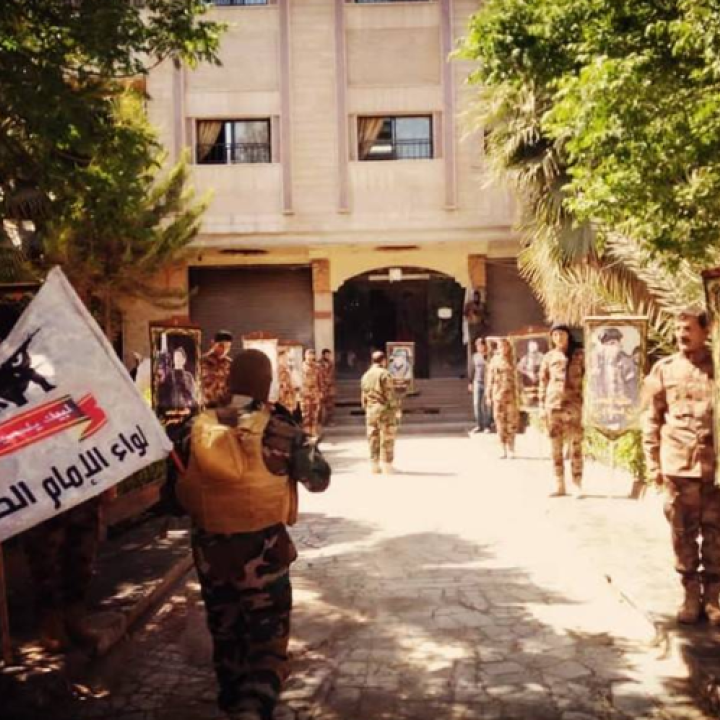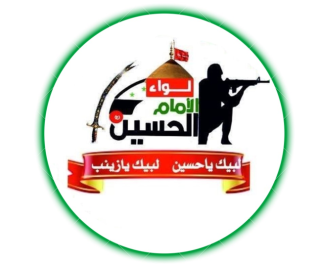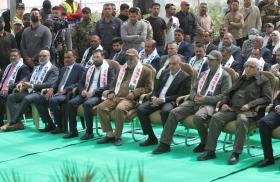
Profile: Liwa al-Imam al-Hussein
Nov 7, 2023
Also available in

About the Authors
Brief Analysis
Part of a series: Militia Spotlight: Profiles
or see Part 1: How to Use Militia Spotlight: Profiles
One of the largest Iraqi-Syrian militias, developed by Iran's IRGC-QF to support regime and proxy objectives in and around Syria.
Name: Liwa al-Imam al-Hussein (LIH); named after the third Shia Imam, Hussein, Ali’s second son and the Prophet Muhammad’s grandson.
Type of movement:
- Tier 2 fasail (armed group), serves as one of Iran's primary operational arms in Syria, engaging in highly kinetic military operations that include ground offensives, strategic bombings, and precise rocket attacks, in support of both the Assad regime (against domestic adversaries) and Iran (against Israel and the United States).
History:
- Formed in 2016, LIH operated under the direct supervision of Qasem Soleimani, the late commander of Iran's Islamic Revolutionary Guard Corps-Qods Force (IRGC-QF), with the explicit aim of countering the Islamic State and reinforcing the Assad regime's hold in Syria.
- While centered in Homs and Aleppo, the group operational reach has extended across Syria as necessitated by strategic objectives. It has been active in multiple locations including al-Moadamiya, Mleiha, Daraya, al-Darkhabiya, Khan al-Sheikh, Wadi Barada, al-Qabun, Harasta, al-Hajar al-Aswad, Yarmouk, Deraa, Idlib, and various sectors in East and West Ghouta.
- In March 2018, Qasem Soleimani and Hezbollah figure Muhammad Jafar Qasir (aka Hajj Fadi) coordinated the nesting of Liwa al-Imam al-Hussein under the Syrian army's command, but with Iranian financial and political support.
- The group received strategic armaments such as surface-to-surface missiles and drones from the IRGC-QF, both for its occasional use and for protection and hidden storage.
- The group claimed a missile strike on U.S. military installations near al-Tanf in October 2021, with aiming corrections provided by a drone overhead during the strike.
- Since 2018, the group's forces have been stationed in the Golan Heights and other locations opposite Israel, where they have attempted multiple cross-border rocket and drone strikes. In January 2019, a rocket attack on a ski resort in northern Israel's Hermon Mountains was initially attributed to the Qods Force, but LIH's nearby activities indicate that it was probably involved. In August of that year, the emergence of drone threats near the Golan led Israel to form a specialized team to counteract these incursions. Israeli strikes in response to such incursions have hit LIH sites in the Golan and around Homs.
- In March 2023, the group launched rocket attacks on U.S. bases in the Omar and Conoco oil fields in Deir al-Zour.
- In October 2023, a significant number of LIH members were redeployed to the Golan and southern Lebanon with the objective of reinforcing Hezbollah's operations during the Hamas-Israel war that erupted October 7.
- LIH currently claims a strength of approximately 6,000 combatants. Its personnel are mainly composed of Syrians but also include fighters from Lebanon, Afghanistan, Pakistan, Yemen, Sudan, Nigeria, and Iraq. These recruits serve in non-leadership capacities, with the command structure remaining predominantly Syrian.
Objective:
- LIH's primary objective is to remain available for military operations against domestic and foreign enemies of the Syrian regime, the IRGC-QF, and Lebanese Hezbollah, including the United States, Israel, and the Syrian Democratic Forces (SDF). It fulfills this mission with financial and political support from each of these patrons.
Chain of command:
- Zulfiqar Hinawi: A Lebanese national and Hezbollah operative who previously headed the organization's regional command in Aleppo and its Aziz engineering unit. He worked alongside Soleimani during the 2016 battles in that area.
- IRGC-QF: The Qods Force formed LIH and has provided it with salaries, benefits, medical support, equipment, and weaponry. These items have typically been transferred to the group through civilian air transport to Damascus International Airport and maritime shipments to Latakia. In addition, LIH personnel undergo training provided by IRGC-QF advisors.
- The Syrian regime and army: LIH is subordinate to the Syrian army's 4th Armored Division, commanded by Bashar al-Assad's brother Maher. LIH's special "Death Battalion" was both established and armed by the 4th Armored Division.
- Hezbollah: The Lebanese militia has been pivotal in establishing LIH in Syria, resulting in frequent public references to LIH as "Syrian Hezbollah." In this sense, Hezbollah's role in Syria is akin to that of the IRGC, overseeing the meticulous process of recruiting and instructing pro-Iranian militia operatives, especially LIH members. A critical aspect of this process is stringent verification of each member's absolute fidelity to velayat-e faqih, the doctrine that grants broad authority to Iran's Supreme Leader.
Affiliate relationships:
- Nujaba. With coordination provided by Soleimani, LIH's leadership worked closely with units of the Iraqi militia Harakat Hezbollah al-Nujaba in 2016.
- Popular Mobilization Forces (PMF): LIH maintains strategic associations with the PMF in Iraq, as evidenced by mutual public endorsements and reciprocal expressions of support on social media platforms. Additionally, the PMF have actively collaborated with LIH in several military campaigns in Syria.
- Sadrist movement: A 2017 report indicated that LIH was associated with Iraqi Shia cleric Muqtada al-Sadr's movement and that it was primarily active in the Damascus area. The report also highlighted that Sadr's movement lent its support to LIH with the express purpose of defending Shia shrines in the Damascus region, mainly Sayyeda Zainab. Many Sadrist families moved to Damascus during Iraq's civil war in 2006-2008.
- Liwa Abu Fadl al-Abbas: The operational activities of this Iraqi Shia brigade in Syria have shown significant overlap with those of LIH.
Subordinate relationships:
- LIH has an Instagram page that was last active in January 2021, with around 700 followers as of this writing.
- The group also maintains a private active Facebook group with around 3,500 members.







